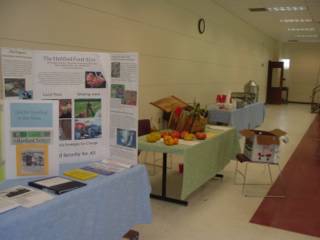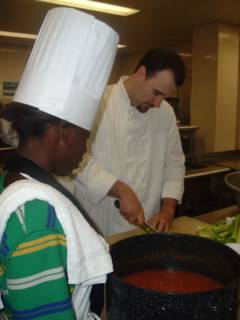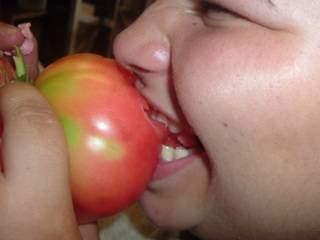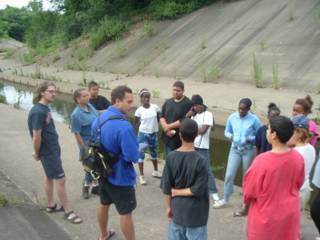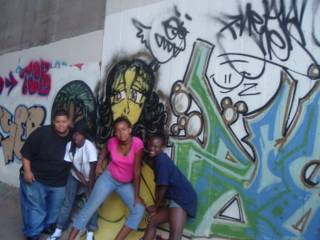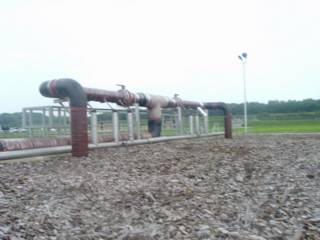You can learn more about GROW Hartford by tuning in to
Crossroads Magazine on Monday, August 9 at 10:30 am on WB television Channel 20.
This article was published in today's Hartford Courant:
Students Learn About Food By Growing It: Agriculture Lessons In An Urban Setting
August 8, 2004
By ANDRE BOWSER, Courant Staff Writer
In the shadows of an I-84 underpass in Hartford, a handful of teenagers have found a spot in the sun as part of a program that teaches them to grow things in unlikely places. Grow Hartford, which is in its first year, grew out of a similar program on Holcomb Farm in Granby that teaches Hartford teenagers about agriculture in a rural setting. But with dirty hands and ivory smiles, these city teenagers plant neat rows of vegetables while highway traffic whizzes by high above. Daisy Huertas, 18, a student at Hartford Adult Education, said working the land is serious business, serious enough to sell the vegetables at Saturday farmers' markets on the acre of farmland at 75 Laurel St."We have a saying around here," she said. "You don't walk on your bed at home with your shoes, so don't walk on the beds of vegetables here."
Grow Hartford runs its farmer's market on Saturdays, offering various organically grown vegetables from 9 a.m. to noon. But the work of planting, harvesting and washing vegetables, which gives about 10 Hartford teenagers more than their share of things to do, is done during the week.Stepping lively last week through rows of vegetables ripe for picking was Jerica Sandiford, a 16-year-old Bulkeley High School student interested in becoming an agricultural scientist or veterinarian, "because you've got to have a backup.""The squash is ready for sale," Sandiford said, pointing to a green, mangled vine with wilted tulip-like flowers on the bright yellow cash crop."When the flower dies on a squash plant it's ready to be picked," he saidThe eggplants were also ready; so were the beans, patty squash, snap peas, cucumbers, lettuce, tomatoes and onions."Onions are three for $1," Sandiford said. "Big ones."At the first farmer's market, last month, most of the fresh produce sold quickly. "The onions sold out," said Huertas, who admitted she was more interested in the business side of the program, where participants learn to manage a farm and sell the produce. "Sometimes it just gets so muggy and hot - and the bugs!"But Huertas understands the program is not just a summer job that pays $7.35 an hour, but a symbol in a community where very little produce is grown and sold on site.
The Underwood Apartments, a convalescent home and assisted living complex, is the closest neighbor to the Grow Hartford site. Residents of the building, most of them elderly, drop by and say hello during the week - and on Saturdays they stop by and buy vegetables."They like to see us out here gardening," Sandiford said. "Some of the people from the apartment building are unable to garden."Sandiford, who also has taken classes at Harris Agriscience & Technology Center in Bloomfield for the past two years, said the program focuses on five basic elements of planting and harvesting: soil management, water management, pest management, labor management and plant diversity.
Across from a row of rainbow chard ready to be harvested, a mound of dirt and mulch is held together by chicken wire, and camouflaged by sunflowers."We're growing potatoes in the mounds next to the cut flowers, and there are beans over there. We planted the flowers all around for beauty," Sandiford said as she explained that the mounds were better than digging the potatoes out of the ground. "It's an easier method to grow them and harvest them."The program runs from April to October - the planting and harvesting season in the Northeast. It is supported by the Hartford Food System, and operates on city land that is run by the Knox Parks Foundation, both not-for-profit organizations in support of agriculture and land. Jack Hale, the executive director of the Knox Parks Foundation, said the city land had been unused before Grow Hartford asked about it a couple months ago."It was a great way to turn it into something productive and at the same time teach kids about gardening," he said.
The lessons on farming, which the teens are required to record in journals each work day, are available for viewing at the following online blog website:www.growhartford.blogspot.com. Jonathan Perez, 18, who attends Prince Technical High School, said his older brother worked at the Granby farm for two years."He told me about the program and said that I should do it too," said Perez, who is spared the 80-minute, round-trip commute his brother had to face each way.
Program Director Laura Brown said the Holcomb site is still very much alive."Grow Hartford really came out of Holcomb Farm; some of our participants are interested in getting away from the city," she said. "We wanted to connect the program to youth and the neighborhoods where the kids come from and the only way to do that is to farm in the city."

 You are looking at the community lunch at the Pope Park Recreation Center. The picture shows how it looked and how many residents we had. it was very successful and i think that some people liked what we made. We made beef and veggie lasgana. At your left you have the food section and the rest of the picture is where they ate. Later on that we all gave a speech and we did good. I think we did very well but not every one came that we wrote a letter to. BY: Rodney Fernandez
You are looking at the community lunch at the Pope Park Recreation Center. The picture shows how it looked and how many residents we had. it was very successful and i think that some people liked what we made. We made beef and veggie lasgana. At your left you have the food section and the rest of the picture is where they ate. Later on that we all gave a speech and we did good. I think we did very well but not every one came that we wrote a letter to. BY: Rodney Fernandez


